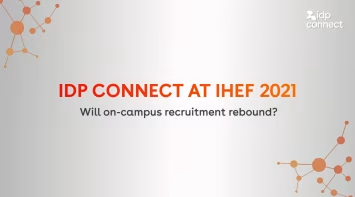Geraldine Solon, bestselling and award-winning author, remarked, “a platform is what defines your visibility with your audience.” For international admissions professionals, our primary audience (students) is fairly clear. In many ways, how we choose the platforms through which to reach these students and other audiences tends to be a rather shotgun approach that may connect with one or more of those targets, but rarely is comprehensively effective.
By this point in the 6 Ps, you hopefully have a solid sense of perspective about where your institution fits, and you have taken the appropriate steps in planning what’s next to move your efforts forward. Here is where the rubber begins to meet the road with the choices you will need to make as to which platforms you decide are the best way for you to define your visibility with your audience.
Live where your audiences live
Perhaps a basic principle, having a presence where your target markets spend their time, makes connecting a much easier task. However, many universities struggle with this principle on the international front. Social media is clearly the place that the connected world lives most often. According to the team at We Are Social in its Digital 2021 report, 53.6% of the 7.8 billion people on the planet are considered active on social media. In 2020, a million new social media users came online every day (a 13% annual growth rate). The graphic below shares the important breakdown of the percentage of users of particular platforms that are also on other social media sites. Quite revealing.

Aside from social media, an institution’s most precious platform on which to inform key audiences is via websites – both the institutional website and those of third-party providers that expand an institution’s reach and link back to it. Over the years, as technology has allowed for greater functionality, particularly for mobile users (which is the way the majority of prospective students operate online), institutional sites, college search engines, and other microsites that feature university content are central to making a connection with interested students and their parents. Make sure your information is accurate and inviting wherever you are represented on third-party sites. In some markets, because of search engine restrictions, having locally hosted microsites is the best way to get your web-based content in front of interested users.
Without fail, anytime you search for something online, whether shopping on your favorite site or researching potential schools for your kids, you will almost immediately see ads for that item or place in your social feeds and/or your favorite websites that have ads. This tool that retargets users with a reminder of what interested them (like your college) are now ubiquitous, increasingly so in admissions circles. While internationally that process is fraught with cultural challenges, you can use social and search site ads to boost your visibility quite significantly for manageable costs.
If 2020 taught us nothing else, it showed us the importance of having a robust virtual event schedule to connect with audiences around the world. With this type of platform, there is no single, universally approved brand that students prefer. So whether you are running your own events and/or joining in with one of the many virtual fair providers, don’t be afraid to take some chances and experiment– as long as the events aren’t cost-prohibitive. In this first year of exclusively virtual events, there’s been a lot of trial and error. As we move into year two, the cream will undoubtedly rise to the top. In the end, make sure the platforms you choose to reach your key demographics extend beyond your institutional site.
Take a digital-first approach
A few years ago, the mantra of web designers in higher education was to make your sites mobile-friendly. These days, if your site is not designed mobile first, you are already behind. The pandemic has also taught us that being digital-first with your recruitment efforts is not only recommended but required in order to reach key audiences. One of the compelling reasons for digital first is apparent in another statistic from the We Are Social report: the global average time people spend on devices is now almost seven hours each day.

As we discussed last year (pre-pandemic), there is great long-term value in brand-building online and a variety of ways to get it done well. But doing so requires a deftness in your approach in order to vary the content and delivery methods you use, depending on your target audience and platforms selected. One size no longer fits all. If you make use of targeted ads at the heart of interest-generating exercises, promotional events, and significant calls-to-action, you will set your institution up for success in bringing in your international class.
Utilize multi-channel communications
As you identify tips and tricks to thrive in this brave new world we find ourselves in, the answers you need will be different depending on the platforms you use and audiences you seek. Just as you must live where you audiences live online, it quickly becomes clear that not everyone digests information the same way. Consequently, as you attempt to increase the number of substantive touchpoints you have with students, parents, counselors/advisers/agents, alumni and other partners throughout the process, your message and the media used to communicate will need to be varied and repurposed. For example, when hosting your virtual events, simulcast them beyond your delivery platform (i.e. to Facebook, YouTube, Instagram). Additionally, video clips can be embedded in emails and on websites and repurposed across different social platforms so different segments of your audiences can digest your content in ways they prefer.
Next month, we’ll dive into the ever-expanding world of the partners we need to be successful in strategic international enrollment management.
You might like...

New IDP Education partnership aims to place Aston University as one of UK’s leading international recruiters
New innovation partnership announcement

Waiting for the MAC review – IDP urges the international education sector to promote UK opportunities
Emerging Futures data demonstrates key drivers for understanding student destination choice.
Higher education sector gathers to celebrate impressive increase in student satisfaction levels across UK
Whatuni Student Choice Awards 2024



